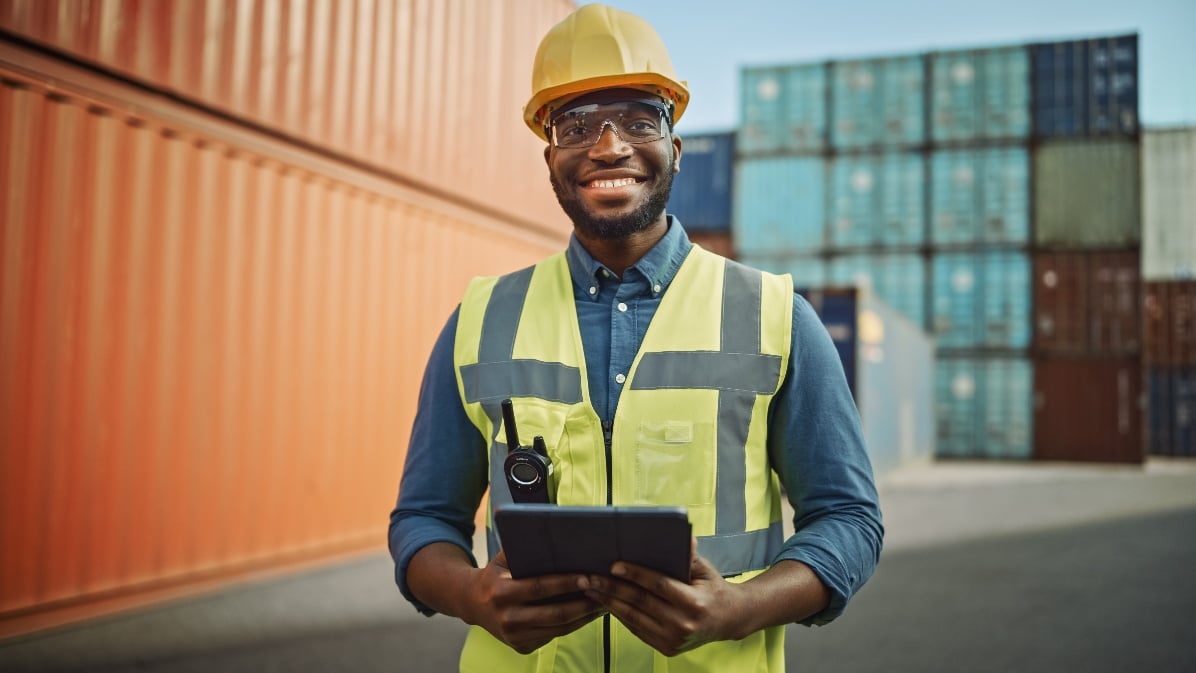Contents
What Is DART Rate and Why Does It Matter?
28 November 2023
When it comes to health and safety, it can sometimes feel like everything boils down to compliance and following the regulations, piece-by-piece. With increasing pressure on companies to record and submit a whole host of safety figures as part of the reporting process, DART rate can seem like just another metric. But, measured correctly, a company’s DART rate can offer valuable insights into its operations.
DART stands for days away, restricted, transferred. It explores the full ramifications of any work-related incident on the production time of the business. As such, a company’s DART rate puts a figure on the impact of any incident, giving a clearer understanding of how it affects the bottom line. Admittedly, DART rate is a lagging indicator of what is happening, only ever looking at incidents that have happened in the past. But assessed in conjunction with other metrics, it can enhance overall understanding of the business, helping managers spot trends and mitigate risks ahead of time. It is important that businesses do not see this metric as a negative measurement but use it to help build a broader understanding of the business.
Armed with this knowledge, businesses can pinpoint issues with greater precision and resolve them quickly, driving positive change.
What is DART rate?
A company’s DART rate helps demonstrate how safe the business is by showing how many workplace incidents result in employee absence or adjusted responsibilities.
Developed by the Occupational Health and Safety Administration (OSHA), DART rate is designed to explore the true business impact of any incident. As a metric, it measures:
1. Number of days employees are absent because of work-related illness or injury (Days Away)
2. Number of days employees are restricted in their work due to work-related injury or illness (Restricted)
3. Number of days employees are transferred to other jobs because they cannot complete their normal duties (Transferred)
When calculated together, this figure helps reveal the full impact of any incidents.
So, how is this different from the recorded incident rate and why do I need to record both?
The incident rate is just a measure of frequency, it does not assess the severity of an incident or help you understand it in a business context. DART rate delves into the issue in more detail, exploring the full ramifications of any incident. It offers you the kind of insight into company operations that allows you to better mitigate risk.
In addition, a company’s DART rate is measured within a set time frame, giving a useful indication of the overall safety performance of the business.
How do you calculate DART rate?
To calculate DART rate, run through the following steps:
1. Add up the number of workplace injuries that resulted in days away from work, restricted work activities and/or job transfer
2. Divide this figure by the total number of hours worked for all employees in that year
3. Multiply the result by 200,000
The 200,000 figure represents the number of hours worked by 100 employees for a full year (50 weeks).
The resulting number will be your DART rate. As a clear indication of how safe or otherwise your company is, the lower the number, the better.
And with that in mind you’ll want to make sure you calculate it accurately to give as true a picture as possible.
-
Be sure not to accidentally include any vacation, sick leave or holidays which will skew the figures.
-
Be careful to only include those incidents that required medical treatment, not just first aid.
-
Make sure you do not inadvertently exclude clerical staff, maintenance workers or temporary employees from the figures.
DART rate is a genuine reflection of your business, so it needs to be as accurate as possible if it is to provide valuable insights.
Why does it matter?
If correctly calculated, DART rate is an indication of a company’s safety record and a high DART rate can be very damaging to a company’s reputation.
It has the potential to:
-
Lose you business: Increasingly requested as part of a selection process, a high DART rate could eliminate you from a contract. No one wants to work with companies with a dubious safety rating - a high DART rating will quickly put them off.
-
Trigger official investigations: A high DART rating is also likely to trigger an official inspection by OSHA. Potentially disruptive and time-consuming, these investigations can explore every aspect of your operation, diverting attention from your everyday operations and potentially resulting in fines or penalties.
-
Increase insurance premiums: As an indicator of the safety of your work environment, your DART rate will affect worker compensation insurance premiums. If claims include lost time or wages, they can end up costing the company considerably more money than claims that are solely medical.
The incentive is to keep the figure as low as possible.
Nevertheless, a company’s DART rate also provides valuable insight into the operations of the business. Managers need to recognize how they can use it to improve their day-to-day activities and their overall safety record going forward to:
-
Streamline operations: The figure should help you identify where time is lost or wasted in the case of an incident to better target mitigation measures.
-
Improve productivity: By recognizing where production time is lost in the case of an incident, you can ensure that lessons are learned going forward and the situation is not repeated.
-
Mitigate risk: The DART rate helps companies identify more clearly where issues lie within the business so they can be targeted more effectively, leading to a safer working environment for everyone.
-
Increase the bottom line: Using the DART rate to examine the full outcome of any incidents, you can make sure all the necessary measures are in place for the next time to make sure you can get the very best out of your staff, supporting them in their return to work and ultimately ensuring production time is not wasted.
What is a good DART rate?
What constitutes a good DART rate will vary from one industry to another. Some industries are inherently riskier than others, meaning their incident rate will automatically be higher.
The important thing is to assess your DART score against industry benchmarks, helping you understand the overall performance of your company. You can find out the relevant benchmark by checking your North American Industry Classification System (NAICS) code.
The United States Bureau of Labor Statistics (BLS) gives clear indications of how different industries compare.
How do you maintain a low DART rate?
Once you appreciate the significance of your DART rate, you will be determined to drive it down. Embedding safe working practices at the heart of your organization is obviously crucial. But there are some additional strategies to help you minimize the figure as much as possible.
-
Calculate correctly: As discussed already, it is easy to overlook certain elements or include things that will skew the calculation. We’ve already explored the impact a high figure can have on your business, so it’s important to make sure your math is right!
-
Leverage best practices: Health and safety should start from the top. It must be practiced consistently and communicated regularly and effectively to instill the right behaviors and minimize incidents.
-
Use tech: The right EHS software allows you to input the data, giving you your DART rating right away. The technology helps you extract the value from the data, offering you better and faster insights. This allows you to take action more quickly and mitigate any risk going forward.
DART rate is an important metric to show the full impact of any incident, providing a gauge of the safety record of a company. But its significance runs deeper than that. By exploring the full ramifications of incidents, DART rate shows companies how they can improve.
Every incident will impact the business in some way. DART rate helps you understand this impact and minimize its effect next time round.
To learn more about how Evotix can help you gain valuable insights from your DART rate, click here.

RELATED BLOGS

What Is EHS Compliance and Why Do Businesses Need It?
19 December 2024 - Team Evotix
EHS compliance refers to the standards that outline the rules, policies and protocols needed to maintain a safe, healthy and eco-friendly work environment.

What Is Safety Incident Management and Why Does It Matter?
14 February 2023 - Team Evotix
Today, workplace accidents still occur all too frequently. In North America alone, 2022 saw 2.6 million reported workplace accidents and illnesses. There are many reasons for workplace incidents to..

What is an EHS Manager? Today and in the Future
20 April 2022 - Team Evotix
For over the past decade, a big transition has been taking place in the way companies manage health and safety.
